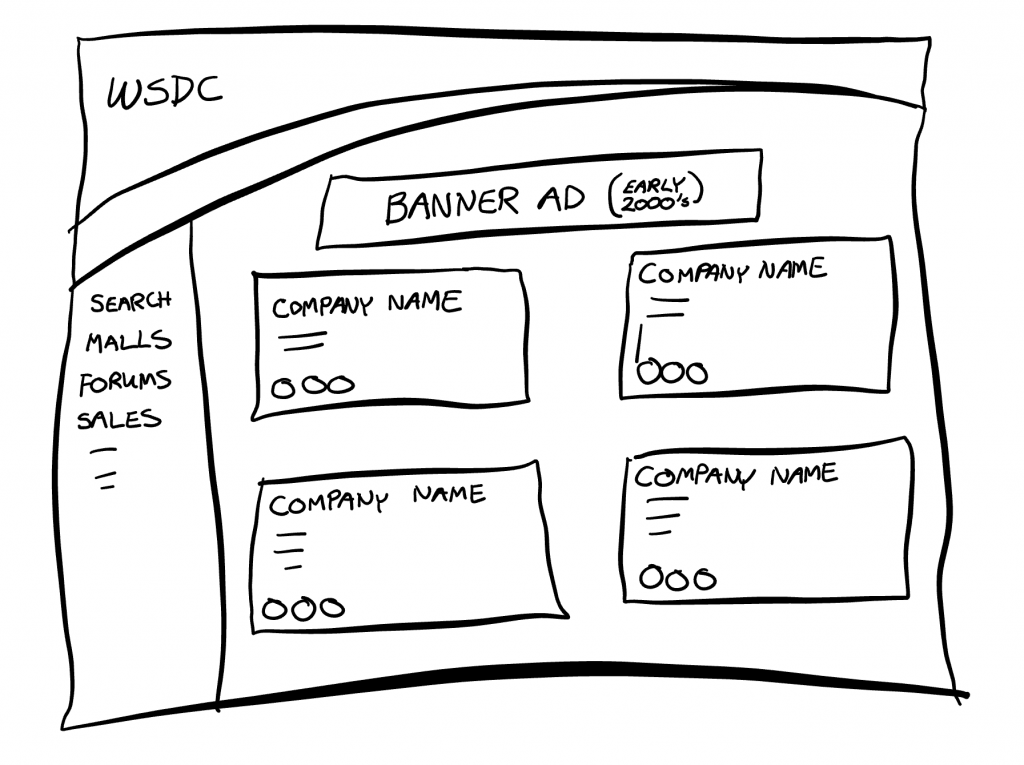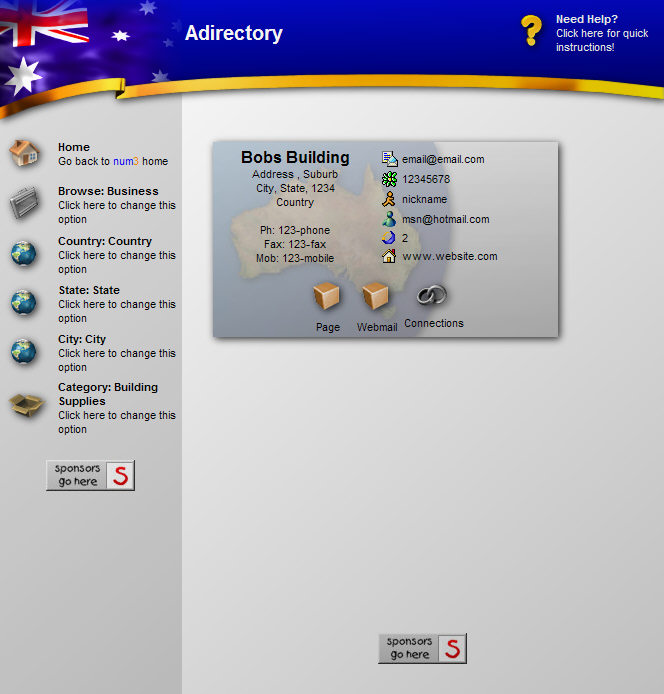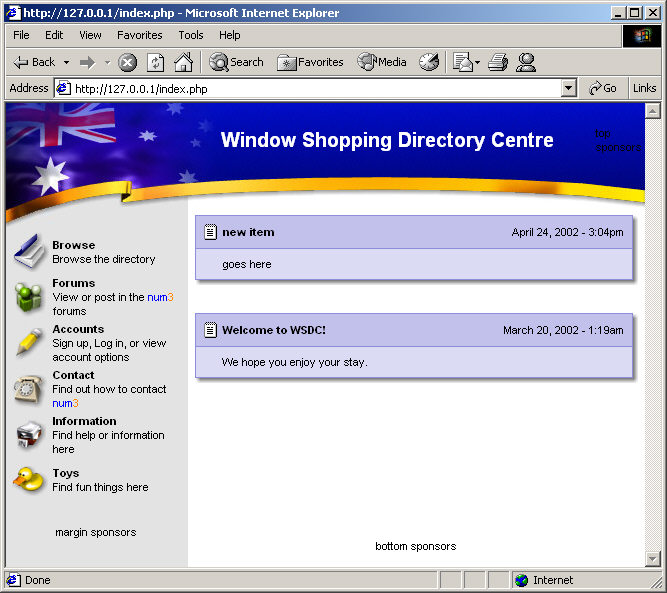One of my earlier challenges was to help a solo founder bring their business directory concept to commercialisation. It was early stage, ideation, no mockups or diagrams, no prototype, no server. Just an idea and a four letter domain. Basically a searchable business directory – extremely common in the early 2000’s – with the point of difference being each business listing would be a digital business card in shape and appearance.

To understand how to make this business appear successful and attract customers, you have to analyse the beneficial and the concerning traits of the existing team (founder):
| Beneficial | Concerning |
|---|---|
| Existing business owner | Vague idea or concept |
| Ability to connect with other businesses | Minimal or non-existant capital |
| Sales, could ‘talk the talk’ | Intimidation & micro-management |
| Liked to use a customer branded example to help the sale |
What you see in the table is a very typical arrangement for someone who comes from the sales world, they have an idea, and they just need someone to build it and they’ll never have to work for anyone again. Our goal is to help build a business structure around that, to support their benefits (they’re FANTASTIC at talking to people) and reduce the concerns from being visible to the outside world (and therefore paying customers/investors) through the product. The result being a functioning business with a strong leader for this stage, and a structure that can complement their style so that it can sustain itself and grow.
We want to play to the strengths, which as a salesperson it almost always focuses on whatever it takes to close the deal. This instantly adds a key parameter to the product:
✔️ Must be malleable in nature, support rapid addition of features, quick to change and adjust to get close to what was promised for this and future sales.
Some might identify this as agile, but it’s more than that. It’s designing a whole product in a very modular strategy with a number of other considerations at play. The other important benefit was the use of customer branded examples in the sales strategy. Not everyone you talk to results in a successful sale, it’s a tiny fraction that might be interested – it might not even be 1%. So this brings us to the next key parameter:
✔️ Potential customers must be able to be pre-created in a rapid, non-invasive, and cost-effective non-technical manner.
This introduces an admin interface, so the founder can easily add who they are targeting to the system in a controlled manner.
This can actually be achieved two ways and warrants explanation as there’s good and bad sides to it. You can have a separate administration interface or section that only admin staff can see or access. This is similar to how most CMS or eCommerce applications work, and allows for true separation but adds a second layer of work – the developers are now building two interfaces and many times doubling the underlying functions.
An alternative is that you utilise a more hybrid approach, using a single common interface that the public or users see, but injecting administration controls within it that only the admin staff can see – so the interface changes slightly depending on who’s viewing it. This can also allow for a dedicated admin section within this interface – not separate like the previous example. I have found this approach is much quicker and cheaper for MVP development (you’re only building one thing instead of two) and I find it easier to understand – however there are staff that this method does confuse as they’re not used to an interface that can adjust to the user permissions.
In this business it was easier for the staff to have a dedicated admin interface.
On to the concerns. All the points listed individually are a catalyst for staff confusion, high turnover, and communication breakdowns. So this product needs to hide that from the outside:
✔️ Appear strong and cohesive to the customer through consistency, reliability, and responsiveness.
And to address the internal staff issues it needs to:
✔️ Utilise common tried and true technologies, nothing overly complicated, simple flows – to remain easy to source staff & remain as cost effective as possible.
With all of that in mind, we could go ahead and architect the product to help give this company it’s best chance of success.
The launch of “Window Shopping Directory Centre” (or WSDC)
This was the start of the online business card directory idea, expanded a little to allow for multiple business pages that contained photos, contact details, and about pages once a business card was clicked on. The interface was themeable for the user, but it’s important to note this was not a multi-tenant/white-labelled system. The technology and infrastructure require mentioning as they were key to resolving a few of the concerning aspects we were trying to mitigate above.
Technology
- The platform was built upon the industry standard LAMP stack – noting it used PERL (via CGI) as the language due to popularity at the time.
- All server-side rendering to maximise browser compatibility, playing to the “strength” requirement in addition to keeping the rapid feel of the platform.
- Styles were all stored centrally to unify the look and feel. CSS wasn’t overly compatible at the time (Looking at you, Internet Explorer)
- The structure of the code itself was modular to allow for quick updates.
- There were separate public and admin areas – the admin to allow for demo business creation for the sales process, along with giving each business the ability to modify their own listing.
Infrastructure
- Hosted on a dedicated server at a local ISP so it could benefit from direct access to increased bandwidth for minimal cost. There was no “cloud” back then.
- The server itself was made from fairly common hardware for ease of maintenance and lower costs.
- Operating system was chosen to be Slackware Linux – one of the most compliant Linux flavours to allow for anyone somewhat familiar with Linux to pick up easily. It was also one of the most common at the time.
This initial launch was moderately successful with many businesses coming on board to provide a small amount of revenue, proving the product, methods, and warranting further additions.
Partnership, Second Version, Monetisation
The success of the initial launch brought on a partnership with Bartercard – which was almost like a B2B credit/token scheme – along with the need to monetise through banner advertising. A second version was launched that brought about these features along with a few extra modules like forums and built-in websites, in addition to automating many of the back-office processes such as printing of invoices and expanding the usability towards interactive kiosks for shopping centre directories.
Marketing was starting to ramp up, where I was starting to think about video advertising and online ads.
At this point the tech stack was starting to show it’s age (and limits with CGI), with PHP becoming more popular in the ecosystem. So a rewrite was on the cards to progress further.
Third Version, No Capital, Mismanagement
About 80% through the rewrite it was clear the management side of the business was failing. While funding was coming in through sales, there were excuses and tactics coming through as part of the sales history of the founder which meant the funding wasn’t being put back in to the business. I made the decision to depart the project, with the third version never being launched and the existing systems were put in to a low-cost holding mode to keep the business surviving as long as possible.
To all the businesses reading this – if you are struggling or can see you only have a few months of income remaining, tell your IT people. They aren’t going to rip all the cables out and go at the servers with an axe, and they definitely aren’t going to destroy what they have spent years building. That goes against every single reason why they chose IT as a career path. What they will do is help the product last as long as it can whether they’re part of it or not.
There are two running states – normal everyday business where maybe there will be an influx of customers – and the supporting high cost infrastructure to match. And then there’s the struggling business that needs to run on a shoestring and just stay alive. By keeping them in the loop they could make a few simple changes to keep your costs low so you can make it to that next sale, and they will be happy knowing they helped achieve that.

The eventual demise occurred within a 6 month timeframe, which from the technical side occurred due to a quirk the server operating system. By default a web server logs each and every visit, every image loaded, etc. which results in a large amount of just text stored on the server. These operating systems at the time had no built-in way of clearing old logs that didn’t matter anymore automatically – there was no log rotation as is found in modern systems today. The server ended up filling itself with logs and therefore had no room to function further. With legal and physical intimidation from the founder, and no money to solve the issue, the company collapsed.
Retrospective
Unfortunately the founder just wasn’t able to remove old habits from their previous career which eventually destroyed all credibility and therefore the business. However the ability to create a successful business by working around the concerning traits was validated and proven financially, with a decent path to future sales and success.
The ideal way it could have moved forward would be if the founder had delegated all the business tasks, by placing someone at the CEO level, and dedicated themselves to the sales and marketing channels as that’s their strength. I have observed this to be a common stumbling block in the very early stage startup journey, and it actually has a syndrome named after it.
…the difficulty faced by organizations, and in particular young companies such as start-ups, where one or more founders maintain disproportionate power and influence following the effective initial establishment of the organization, leading to a wide range of problems.
Founder’s Syndrome
We would have had a strong team of 3 covering all bases – tech, sales/marketing, & business – and had enough traction to gain funding to reach the next scale point.

